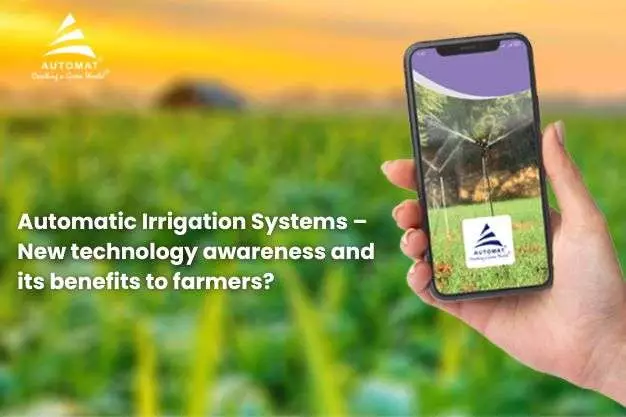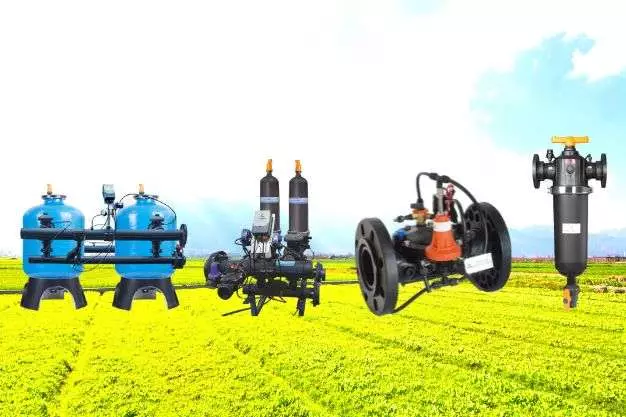This article shares the importance of upgrading manual control irrigation systems to semi or fully-automatic irrigation systems by small or big farmers for optimum crop production.

Irrigation Systems in India are Mainly of 3 Types
- Surface
- Sprinklers
- Drip
In India, agriculture is the major source of food production to the growing demand of its population and irrigation is an essential process that influences crop growth and crop yield. Small land-holding farmers with low returns from the field, avoid adopting newer technology although it may help them indirectly by saving time, labour costs, and precise watering of crops, which would result in increased yield and ultimately better financial returns.
Currently, vast majority of farmers are running irrigation systems manually and the entire process is not easy and also requires frequent maintenance. Manual operations also lead to inconsistent irrigation and are a major cause of water wastage, and low yield from crops because of lack of proper irrigation. Adoption of automatic irrigation systems for large or small fields will make irrigation smarter and more effective and ultimately leading to higher financial returns for the farmers.
During the agricultural season, farmers visit their fields oftenly to check the moisture level of the soil and based on their observations, they decide on the requirements of irrigation for their fields. During irrigation they run the water pump and open the valves in the system individually and if fertigation is required, it is applied either manually or through venturi injectors. They physically monitor the sand media filters/ hydro cyclone/ screen or disc filters for cleaning and maintenance and wait in the field till the irrigation cycle is complete and then switch off the pump and close the valves. Overall, a lot of effort and time is spent by farmers to irrigate their fields.
But, now automation technology can be incorporated into various irrigation devices and farmers can upgrade manually operated drip, sprinkler, or surface irrigation systems to semi-automatic and then to fully automatic irrigation systems based on their budget. Automation in irrigation makes the farmer’s work much easier and his presence in the field is not mandatory.
In India, farmers need low-cost and simple control automatic irrigation systems and in today’s era of mobile telephony and the wide use of the smart mobile phones and internet by the farmers, they can get remote irrigation status and control of their agricultural field even if they are far away from their fields.
The need of the hour is a smart irrigation system that is cost-effective and easy to use. Today, automation is playing an important role in human life. It not only provides comfort but also reduces energy consumption, increases efficiency, and is time-saving. Today irrigation companies are providing readymade solutions to upgrade manual systems to a degree of automation within an affordable budget. The automation controls the water motor and selects the direction of the flow of water in the pipe with the help of a soil moisture sensor and sending the relevant information (operation of the motor and direction of water) of the farm field to the farmer’s mobile phone.
How Do Automatic Irrigation Systems Work?

Automatic Sprinkler & Drip Irrigation systems have many automated components that are different from regular systems including components like – Electronic controller that operates various devices like the water pump which can start automatically at a pre-set time, high tech-components on the head unit for automatic flushing of sand media filter / hydro cyclone / screen or disc filters without interruption during the running of the system, automatic fertigation injector with a controlled amount of liquid fertilizers and chemicals, valves of different zones opening and closing automatically to irrigate large area in segments.
These automated irrigation systems are customizable and even an existing manual drip irrigation systems, surface irrigation systems, and sprinkler irrigation systems can be upgraded to overcome their existing limitations.
Due to the innovative technology involved, the cost of the various devices in a fully automatic irrigation system are higher, but farmers can start stepwise to upgrade existing manually operated devices installed in the irrigation system to semi-automatic and then to fully automatic irrigation devices based on their budget.
- Initially manual filters can be replaced with semi-automatic filters because manual hydro cyclone, sand media, screen, or disc filters require frequent cleaning, and most farmers avoid them due to the tedious task of opening and cleaning the cartridge of the filter frequently and most of the times they just throw away the inside cartridge and run the system.
- After getting confidence in the semi-automatic product functioning, they can replace the manual valve to solenoid operated hydraulic valves and sequentially add other automatic products into their irrigation system till the conversion of the existing manual system to a fully automatic irrigation system is complete.
Remotely Monitored Fully Automatic Irrigation System
The system can also be used remotely to allow a farmer to monitor the entire system including- automatically measure the water needs and the content of the crop, check if there is any blockage in the passage of water, and if any problem is seen the user can switch off the system through the device application. A smart irrigation system is equipped with many devices like soil moisture, rain, light, temperature, water level, and flow sensors and these control the water pump, solenoid valve, filtration and fertigation units, and different segments of the irrigation field in sequence.
To sum it up, almost every manual irrigation system can be automated and the cost of automation will depend on the degree of automation and the size of the field. But considering the long-term benefits, it is well worth the effort as it saves time, labour, water and electricity which compensates for the difference in price. According to the report, the global irrigation automation market size has grown from USD 4.2 billion in 2022 to USD 9.2 billion by 2027 Furthermore, to achieve higher quantity and good quality of food grains, a fully automatic system will be the better and more efficient solution with precise watering of crops. Once the system is fully optimised, farmers do not have to worry about the irrigation process and can concentrate on other important tasks.




